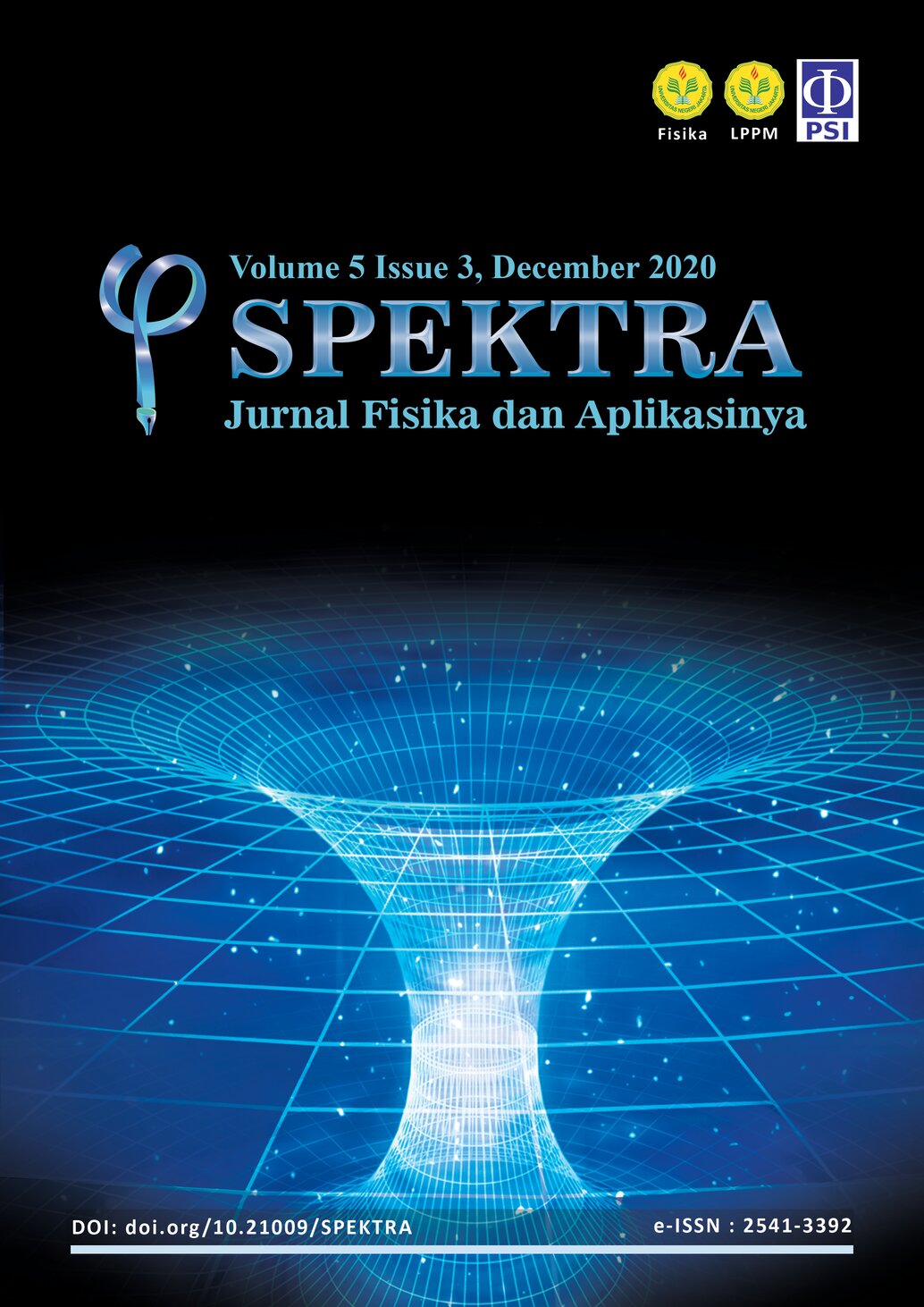GEOPHYSICAL FORENSIC FOR ARCHAEOLOGICAL EXPLORATION IN MUAROJAMBI, INDONESIA
DOI:
https://doi.org/10.21009/SPEKTRA.053.06Keywords:
geophysical forensic, gumpung, ground penetrating radar, Muarojambi, Telago RajoAbstract
In July 2011, archaeological exploration tried to apply the physics method for the first time in Muarojambi, Indonesia. We combined physics with geosciences and called it geophysical forensic. Our method is known as Ground Penetrating Radar (GPR). GPR used high-frequency electromagnetic (EM) waves between 10-3000 MHz to imaging subsurface based on dielectric permittivity’s physical parameters. Changes in the electrical properties, rock magnetism, and water content of the material under the surface will provide a response recorded on the radargram as a function of distance to time (two-way travel time). Data processing performs to reduce the noise recorded when collecting data. We have successfully obtained four GPR lines; three lines gathered near Gumpung Temple and one line at Telago Rajo Pool. The GPR method succeeded in giving a subsurface image and possibility of the archaeological objects near the Gumpung Temple and Telago Rajo Pool.
References
[2] H. Santiko, “The Structure of Stupas at Muara Jambi,” Kalpataru, vol. 23, no. 2, pp. 113-120, 2014.
[3] P. Wessel et al., “Generic Mapping Tools : Improved Version Released,” EOS, Trans. Am. Geophys. UNION, vol. 94, no. 45, pp. 409-410, 2013.
[4] S. A. Mangga, S. Santosa, and B. Hermanto, “Geological Map of Jambi, Sumatra. Bandung: Geological Research and Development Center,” 1993.
[5] M. F. Coffin, L. M. Gahagan, and L. A. Lawyer, “Present-day Plate Boundary Digital Data Compilation,” in UTIG Technical Report No. 174, no. 512, University of Texas Institute for Geophysics, pp. 1-5, 1998.
[6] B. Sugiarto, G. M. L. Junursyah, and I. Pratomo, “Identifikasi Objek Bawah Permukaan Menggunakan Metode,” J. Geol. dan Sumberd. Miner. / J. Geol. Miner. Resour, vol. 19, no. 4, pp. 197-207, 2018.
[7] G. Leucci, “Forensic Geosciences and Geophysics: Overview,” in Advances in Geophysical Methods Applied to Forensic Investigations: New Developments in Acquisition and Data Analysis Methodologies, Cham: Springer International Publishing, pp. 11–48, 2020.
[8] P. M. Barone, “Forensic Geophysics,” pp. 175-190, 2017.
[9] H. C. Dick et al., “Detection and characterisation of Black Death burials by multi-proxy geophysical methods,” J. Archaeol. Sci, 2015.
[10] E. Rizzo et al., “Geophysical Survey and Archaeological Data at Masseria Grasso (Benevento, Italy),” Surv. Geophys, vol. 39, no. 6, pp. 1201-1217, 2018.
[11] ASTM D6432-11, “Standard Guide for Using the Surface Ground Penetrating Radar Method for Subsurface Investigation,” 2011.
[12] A. Tzanis, “FastTIMES Software for Analysis of Near-Surface Geophysical Data,” April 2010, 2014.
Downloads
Published
How to Cite
Issue
Section
License
SPEKTRA: Jurnal Fisika dan Aplikasinya allow the author(s) to hold the copyright without restrictions and allow the author(s) to retain publishing rights without restrictions. SPEKTRA: Jurnal Fisika dan Aplikasinya CC-BY or an equivalent license as the optimal license for the publication, distribution, use, and reuse of scholarly work. In developing strategy and setting priorities, SPEKTRA: Jurnal Fisika dan Aplikasinya recognize that free access is better than priced access, libre access is better than free access, and libre under CC-BY or the equivalent is better than libre under more restrictive open licenses. We should achieve what we can when we can. We should not delay achieving free in order to achieve libre, and we should not stop with free when we can achieve libre.
 SPEKTRA: Jurnal Fisika dan Aplikasinya is licensed under a Creative Commons Attribution 4.0 International License.
SPEKTRA: Jurnal Fisika dan Aplikasinya is licensed under a Creative Commons Attribution 4.0 International License.
You are free to:
Share - copy and redistribute the material in any medium or format
Adapt - remix, transform, and build upon the material for any purpose, even commercially.
The licensor cannot revoke these freedoms as long as you follow the license terms.

 E-ISSN 2541-3392
E-ISSN 2541-3392  Focus & Scope
Focus & Scope  Editorial Team
Editorial Team  Reviewer Team
Reviewer Team  Author Guidelines
Author Guidelines  Article Template
Article Template  Author Fee
Author Fee  Publication Ethics
Publication Ethics  Plagiarism Policy
Plagiarism Policy  Open Access Policy
Open Access Policy  Peer Review Process
Peer Review Process  Retraction & Correction
Retraction & Correction  Licensing & Copyright
Licensing & Copyright  Archiving & Repository
Archiving & Repository  Contact
Contact  Mendeley
Mendeley 

